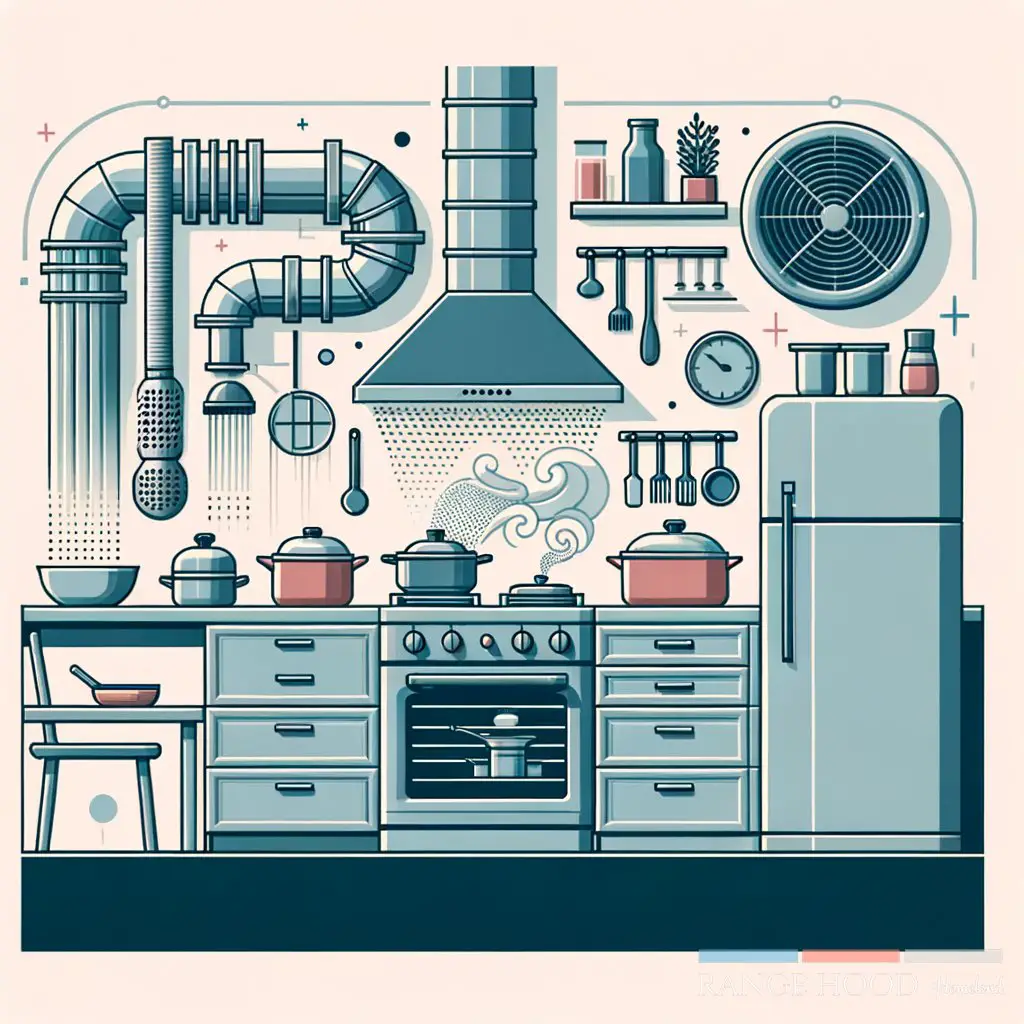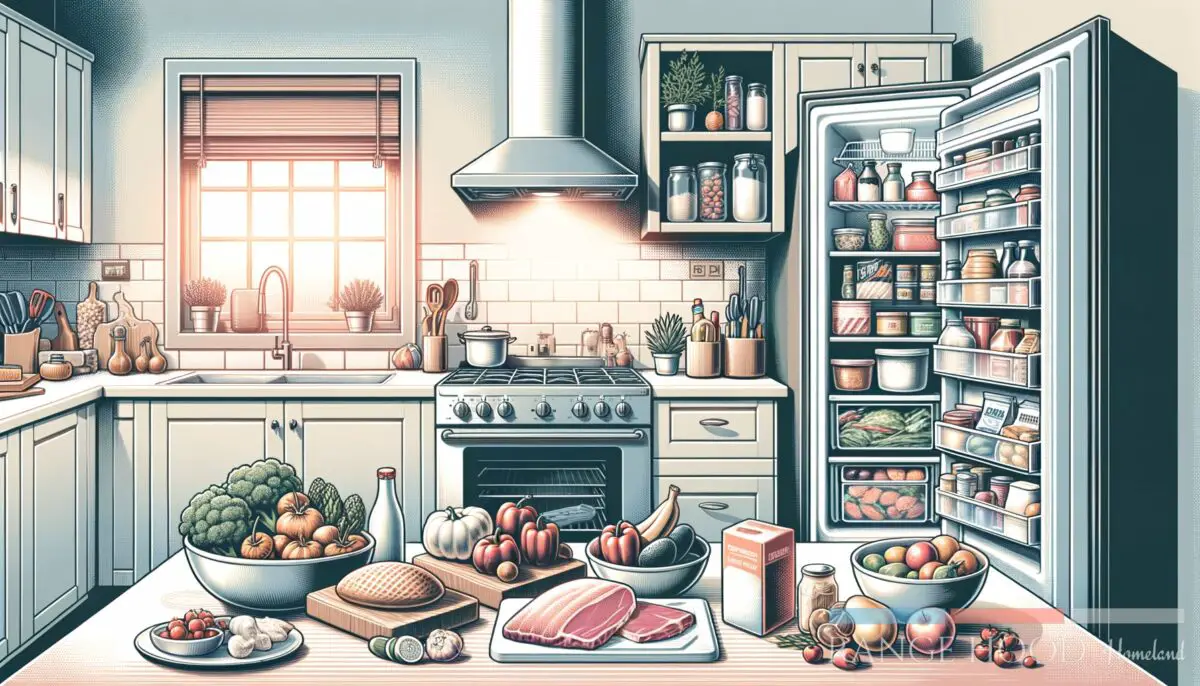Imagine standing between two worlds: one where your kitchen feels like an oven, and the other, a breath of fresh air. Why does kitchen ventilation matter so much, and how does it boost cooking efficiency?
Debates get as heated as a skillet on high flame. For a taste of how essential the right tools can be, consider the importance of choosing the best range hoods.
In this post, we’ll dive into how proper ventilation makes a world of difference in your culinary creations.
If you are a visual learner, check out this video titled ‘Kitchen Ventilation Solutions to Indoor Air Pollution Hazards from Cooking’
Key takeaways
- Keeps the air clean by removing pollutants and reducing cleaning.
- Improves cooking efficiency through better temperature and odor control.
- Reduces cooking odors to keep your home smelling fresh.
- Controls humidity to prevent mold growth and protect appliances.
How does effective ventilation transform your cooking experience?
When we talk about kitchen design, ventilation might not be the first thing that pops into your mind, but it should be. Effective ventilation directly influences not just the air quality, but also how efficiently you can cook.

It might not be as flashy as a high-end stove or a sleek knife set, but it’s arguably more important. Let’s explore how proper ventilation positively impacts cooking efficiency.
1. Keeps the air clean
First and foremost, a well-ventilated kitchen keeps the air clean. Cooking, especially frying or sautéing, releases a lot of smoke, grease, and odors into the air.
Good ventilation, like the systems found in the best wall-mount range hoods, extract these pollutants directly from the air, reducing the risk of breathing issues and creating a healthier cooking environment.
Moreover, clean air means a clearer kitchen – literally. Smoke can build up on walls and ceilings, staining surfaces and making your kitchen look grimy.
By extracting the bad air, ventilation helps keep your kitchen cleaner for longer, sparing you from frequent deep cleans.
2. Improves cooking efficiency
You might not think it, but ventilation can actually make you a better cook. How?

By maintaining a comfortable working temperature. Overheated kitchens are not just uncomfortable; they can also interfere with your cooking.
High heat can cause certain foods to spoil faster and can create an uncomfortable cooking environment.
With a setup from the best under-cabinet range hoods, the heat is drawn away, keeping your kitchen cooler and making it easier for you to focus on perfecting those recipes. Cooler air also means your fridge and freezer don’t have to work as hard to keep things cool, which could save on energy bills.
3. Reduces cooking odors
No one wants last night’s fish lingering in the kitchen during breakfast. Proper ventilation plays a key role in reducing cooking odors quickly.
It’s not just about making your kitchen smell better; it’s about keeping your entire home fresher. Living areas free from cooking odors are more pleasant and inviting.
By channeling odors outside, systems like those highlighted in how to reduce cooking odors can help ensure that your kitchen only smells like what you’re cooking when you’re cooking it. This is especially important in open-concept homes where kitchen smells easily drift into living spaces.

4. Controls humidity
Too much humidity can be as bad as too much heat. Excessive moisture from boiling water or running dishwashers can make your kitchen feel stuffy and promote the growth of mold and mildew.
A high-quality ventilation system removes this excess moisture, maintaining a more comfortable humidity level.
Lower humidity levels also protect your kitchen cabinets, walls, and appliances from moisture damage. For tips on keeping your ventilation system running smoothly, consider reading about maintaining your kitchen ventilation system.
Keeping humidity in check ensures your kitchen stays in top shape for years to come.
5. Enhances lighting
Last but not least, good ventilation systems, especially range hoods, usually come with built-in lighting. This more illumination can make a big difference in smaller kitchens or areas where lighting is low.
Better lighting means you can see what you’re doing more clearly, which naturally improves your cooking efficiency.
“Effective kitchen ventilation plays a key role in reducing cooking odors quickly. It’s not just about making your kitchen smell better; it’s about keeping your entire home fresher.Living areas free from cooking odors are more pleasant and inviting.”
Moreover, cooking under well-lit conditions is safer. You’re less likely to make mistakes with sharp knives or hot pans if you can clearly see what you’re doing.
For ideas on adding range hoods with excellent lighting into your kitchen, check out tips on how to integrate a range hood into your kitchen design. Better lighting means better cooking, and that’s something all chefs can appreciate.
COSMO COS-63190S Wall Mount Range Hood

COSMO COS-63190S Wall Mount Range Hood
More ventilation tips
Enhancing your kitchen’s ventilation system can significantly impact your cooking efficiency and overall comfort while cooking. Beyond the primary steps of installing a suitable range hood and ensuring it operates correctly, here are some extra measures you can take to improve your kitchen’s air quality.
- Ensure regular maintenance of your ventilation system. A clean filter is more efficient.
- Open windows when possible to allow for natural air circulation.
- Use fans to assist in the distribution of air throughout your kitchen.
- Consider investing in air-purifying plants that can help absorb toxins.
- Make use of splatter guards while cooking to minimize grease particles in the air.
Before diving into the nuts and bolts of kitchen ventilation, here’s a quick rundown of dos and don’ts:
| Do | Don’t |
|---|---|
| Clean and replace filters regularly. | Ignore warning signs of ventilation issues. |
| Use exhaust fans to complement your range hood. | Rely solely on windows for kitchen ventilation. |
| Check for proper outdoor venting. | Forget to consult professionals for installation. |
| Incorporate natural ventilation methods. | Block air passages with furniture or appliances. |
These guidelines can help you maximize the efficiency and effectiveness of your kitchen venting system.
Effective kitchen ventilation management promotes better air quality.
Advantages and disadvantages of kitchen ventilation
Effective kitchen ventilation offers a plethora of benefits that extend beyond just a smoke-free environment. It can transform your kitchen into a more pleasant, healthier space for cooking and socializing.
However, it’s crucial to weigh both sides to understand the full impact.
Advantages
- Improves air quality by removing harmful pollutants and smoke.
- Helps in controlling kitchen temperature, making the cooking experience more comfortable.
- Reduces lingering odors, keeping your home smelling fresh.
- Decreases humidity, limiting the growth of mold and mildew.
- Enhances your home’s overall safety by reducing the risk of grease fires.
Disadvantages
- Installation can be costly, especially for high-end models or extensive ductwork.
- Can be noisy, depending on the model and power of the ventilation system.
- Requires regular maintenance to keep it functioning efficiently.
- Might require professional installation to ensure proper venting and compliance with local building codes.
Understanding these aspects can help you make a more informed decision when considering enhancements to your kitchen’s air quality and efficiency.
As someone who spends a fair bit of time tinkering in the kitchen but isn’t exactly a culinary expert, I’ve come to appreciate the underrated hero that is the kitchen ventilation system. In my experience, a good system doesn’t just make cooking more pleasant by whisking away smoke and odors; it also contributes to a healthier home environment.
Less grease in the air means less grease settling on surfaces, which in turn, means less cleaning and a nicer-looking kitchen. If you’re on the fence about upgrading or installing new kitchen ventilation, the best range hoods guide might just tip the scales for you.
I’m no professional chef, and my home isn’t opening as a Michelin-star restaurant anytime soon, but I know this: good food, good friends, and good air quality make for the best memories. Investing in proper kitchen ventilation seems like a no-brainer when you consider not just the immediate benefits of odor and smoke removal but also the long-term advantages like improved health and lower cleaning costs.
It’s one of those kitchen upgrades that keeps on giving, long after the initial buzz wears off.
Frequently asked questions (FAQ)
What’s the best way to test kitchen ventilation efficiency?
Testing your kitchen ventilation’s efficiency can be as simple as boiling a pot of water to generate steam. Watch how quickly and effectively the steam is evacuated from the room.
If it lingers or spreads throughout your home, it may be time to consider an upgrade or check your venting system for issues. Proper ventilation should quickly remove steam and associated odors from your kitchen.
Can kitchen ventilation systems be too powerful?
Yes, a ventilation system can be too powerful, especially for home kitchens. Overly powerful systems might create negative pressure environments, affecting the operation of gas-powered appliances or even pulling harmful gases back into your home.
It’s essential to choose a system that matches your kitchen’s size and cooking needs. Consult professionals to ensure a balance between power and practicality.
How usually should I clean my kitchen ventilation system?
For optimal performance, regular maintenance, including cleaning, is crucial. A general rule of thumb is to clean or replace filters every 1 to 3 months, depending on the amount and type of cooking you do.
For ducted systems, an annual checkup by a professional is advisable to clear out any accumulated grease or debris in the ductwork. Maintaining a clean system will ensure it operates efficiently and lasts longer.
Final thoughts
In wrapping up, we’ve explored the multifaceted role that kitchen ventilation plays in cooking efficiency. From keeping the air clean to improving overall kitchen conditions, the right ventilation system can transform your cooking experience.
Remember, while the immediate benefits such as odor and smoke removal are noticeable, it’s the long-term advantages like healthier living spaces and reduced cleaning efforts that make a significant difference. Whether you’re a culinary enthusiast or simply love spending time in your kitchen, ensuring your ventilation is up to par is crucial.
How has kitchen ventilation impacted your cooking and overall kitchen environment? Did I cover everything you wanted to know? Let me know in the comments section below. I read and reply to every comment. If you found this article helpful, share it with a friend, and check out my full blog for more tips and tricks on enhancing your kitchen.
Thanks for reading, and here’s to a fresher, cleaner kitchen!















